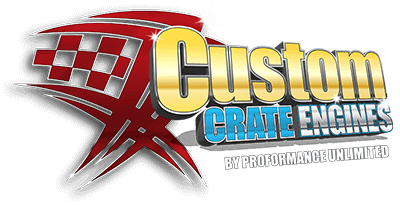Technical Center
Block Core Procedure:
Engines are stripped bare, all galley plugs and cam bearings are removed. The block is then acid tanked to remove all foreign material. The block is then magnafluxed and carefully inspected for flaws. The block is align honed to insure the crank shaft main journals are on the same centerline; this reduces bearing wear and improves oil pressure and performance. Cylinders are then bored .030 then honed. Next, the block deck is resurfaced to ensure proper piston to deck clearance. The block is deburred and all bolt holes are tapped. The block then goes through a high pressure was to clean all galley holes. Engine block is then painted to custom requested color with 5 coats of ceramic engine paint, or custom painted at customer’s request. All new galley plugs and a full set of brass freeze plugs are installed along with a set of Clevite 77 cam bearings.
Crankshaft:
The new Scat or Eagle crankshaft is micro polished to the engine builder’s specific tolerances for the performance application. If the crankshaft rod and main journals are not already chamfered, this process is performed. Chamfering the journals helps allow the oil to properly lubricate the journals at high rpm.
Rods:
All connecting rods new or reclaimed are taken and reconditioned. This allows the builder to clearance the rod journals to the specific application. If the connecting rod does not have ARP bolts already installed, the machinist installs a set.
Pistons:
We use a variety of performance pistons: Keith Black, Speed-Pro, SRP, etc. The brand and type is determined by the specific application and engine size being built. All pistons are checked carefully for defects and proper weight before assembling.
Balancing:
Engine balancing is a standard procedure at Custom Crate Engines. In fact, we feel engine balancing is the most important aspect of building your engine right. Balancing rotating assemblies affects every aspect of your engine running right. It reduces internal loads and vibrations that stress metal and may eventually lead to component failure. Balancing goes hand in hand with performance engine building.
Blue Printing:
Blueprinting your engine is completely necessary to obtain maximum power and to insure the longest possible engine life and reliability. It also adds discipline to our process which decreases any chance of engine failure due to improper clearances. When we proceed with an engine build, we always execute the entire engine building blueprint building process. This means hand building an engine with perfectly fit components using maximum and minimum recommended clearances. These specifications are determined using our 30 years of engine building experience.
Cylinder Head:
We use a wide variety of cylinder heads starting with OEM, Dart Pro-One, World Products, AFR, etc., all depending on the application and horsepower requested. Most of our engine combinations utilize Dart Pro-One aluminum cylinder heads. Each head we use is purchased bare and are hand assembled to match camshaft specifications and engine characteristics.
Bearings:
Here at Custom Crate Engines, we believe in only using Clevite 77 performance bearings. With Clevite’s tri-metal bearing design, there is less crankshaft and rod failure in performance applications.
Piston Rings:
Piston rings are a very important part of an engine. Using the correct type for the application will make the engine last longer. When it comes to assembling the engine, each piston ring is hand filed to match the specific cylinder bore to meet the needs of the application.
Valve Train:
The valve train is another crucial part of the engine. On 90% of the engines we build, they come standard with 7/16 hardened studs and a set of 7/16 true aluminum roller rockers. This makes the valve train unbreakable. When it comes to the push rods, we use hardened push rods. Each engines push rod length is measured to make sure the roller rocker rides perfect center on the valve stem. Then each rocker is adjusted for optimum performance.
